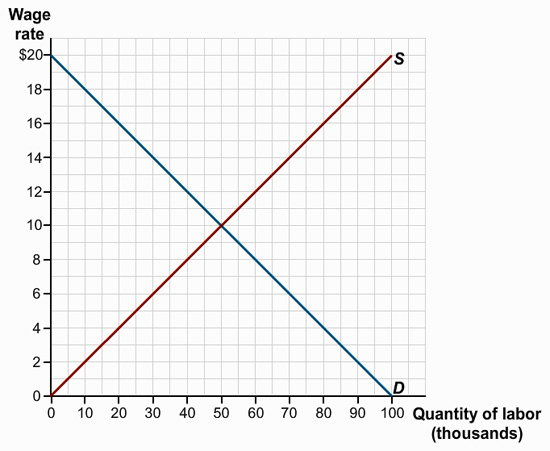Step 1
There is only one labor market in Profunctia. All workers have the same skills, and all firms hire workers with these skills. Use the accompanying diagram, which shows the supply of and demand for labor, to answer the following questions.

What is the equilibrium wage rate in Profunctia? At this wage rate, what are the level of employment, the size of the labor force, and the unemployment rate?
Equilibrium wage: $
Level of employment:
Labor force:
Unemployment rate: percent